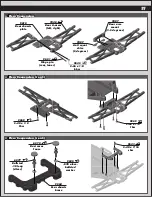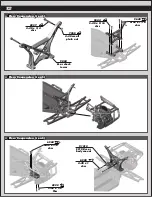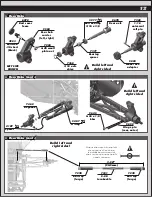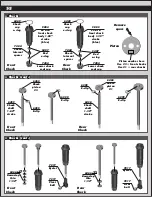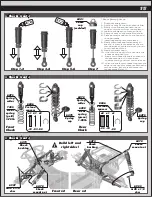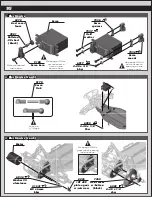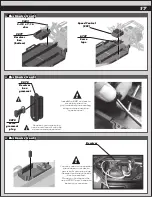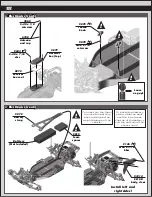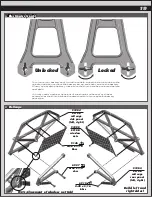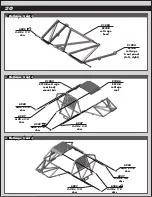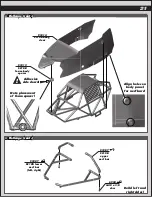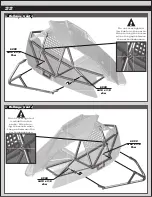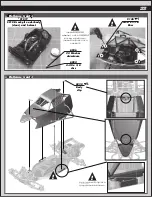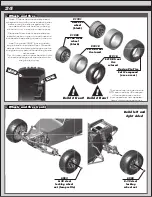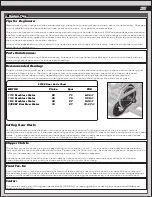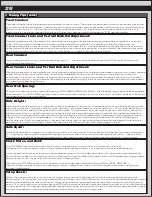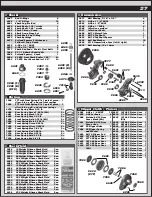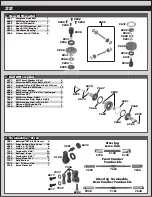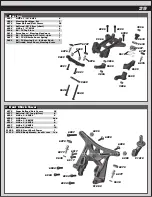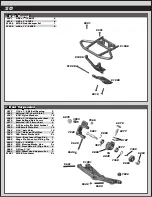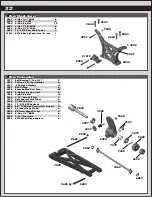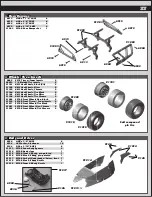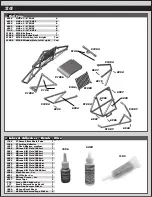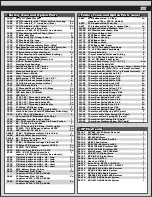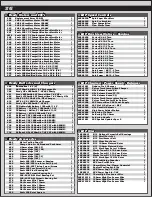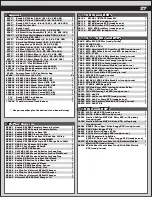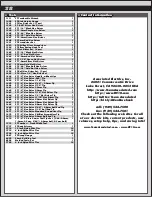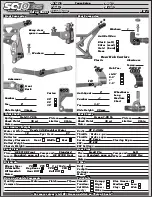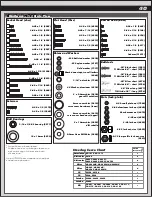
:: Tuning Tips
Slipper Clutch:
The assembly instructions give you a base setting for your slipper clutch. Turn the nut on the shaft so that the end of
the top shaft is even with the outside of the nut. Tighten the nut 3 more turns. At the track, tighten or loosen the nut in
1/8 turn increments until you hear a faint slipping sound for 1-2 feet on takeoffs.
Another popular way to set the clutch is to hold both rear tires firmly in place and apply short bursts of throttle.
If the clutch is properly set, the front tires should lift slightly up off the surface.
Parts Maintenance:
Periodically check all moving suspension parts. Suspension components must be kept clean and move freely without
binding to prevent poor and / or inconsistent handling.
Caster:
The vehicle comes with 30 degree caster blocks (#7922). For less aggressive steering try the optional 25 degree
caster blocks (#7919).
Front Toe-In:
Zero degrees toe-in (tires pointing straight forward) is the setting that should be used in almost all track conditions.
Occasionally, adding a little bit of toe-out (tires pointing slightly out) can increase initial turn in response. A slight amount
of toe-in will increase front end stability a little and results in less aggressive steering, but this option is rarely used.
Tips for Beginners:
Before making any changes to the standard setup, make sure you can get around the track without crashing. Changes
to your vehicle will not be beneficial if you can’t stay on the track. Your goal is consistent laps.
Once you can get around the track consistently, start tuning your vehicle. Make only ONE adjustment at a time, testing
it before making another change. If the result of your adjustment is a faster lap, mark the change on the included setup
sheet (make addtional copies of the sheet before writing on it). If your adjustment results in a slower lap, revert back to
the previous setup and try another change.
When you are satisfied with your vehicle, fill in the setup sheet thoroughly and file it away. Use this as a guide for future
track days or conditions.
25
Setting Gear Mesh:
You should be able to rock the teeth of the spur gear slightly back and forth in the teeth of the pinion gear without
making the pinion gear move. If the gear mesh is tight, then loosen the #31531 motor screws and move the motor back
a little. Tighten the motor screws, then check gear mesh again. Gear mesh that is too tight or too loose can reduce
power and damage or overheat the motor or damage the teeth of the gears.
Recommended Gearing:
Proper motor gearing will result in maximum performance and run time while reducing the chance of overheating and
premature motor failure. The gear ratio chart lists recommended starting gear ratios for the most widely used
motor types. Gear ratios will vary depending upon track conditions, driving style, and personal preference.
Generally, you should not increase the pinion gear size more than one tooth greater than the starting size.
MOTOR
17.5 Brushless Motor
13.5 Brushless Motor
10.5 Brushless Motor
3300kV Brushless Motor
Pinion
28
26
24
18
Spur
75
75
87
87
SC10B Gear Ratio Chart
FDR
6.96 :1
7.50 :1
9.42 :1
12.57 :1
Summary of Contents for SC10B RS RTR
Page 1: ...10 12 ...

